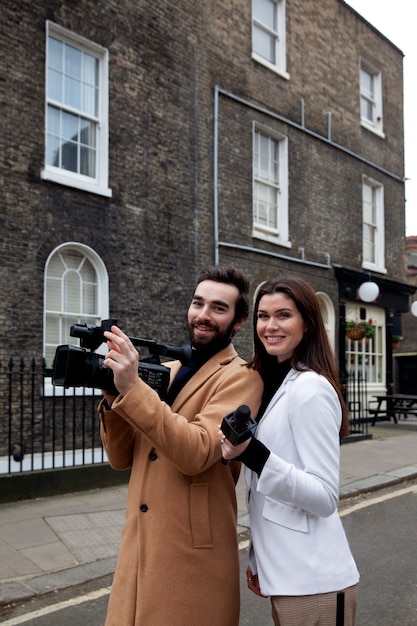
Thinking about visiting London? It’s essential to plan ahead to choose the best time based on the activities you’re interested in and the attractions you want to see. Here’s a handy guide to help you decide when to visit London, UK.
Things to Do in London
From iconic red telephone booths to the grand Buckingham Palace, there’s no shortage of things to do in London. Whether you’re into historical landmarks, cultural festivals, or outdoor parks, London has something special for everyone.
When to Visit
London welcomes around 21 million visitors annually, with peak season in the summer (June to August). However, every season offers its unique charm. The mild summer temperatures average around 73°F, perfect for shorts and a t-shirt. Winter is cooler, around 45°F, so bring a warm jacket. Spring temperatures range from 54°F to 64°F, and fall is similar, averaging around 64°F.
Best Times to Visit
May to June and September to October are often considered ideal times to visit. These months feature fewer tourists, mild weather, and generally lower prices.
Budget-Friendly Tips
Visiting in September, for example, can be more affordable than the peak summer months. Tours, hotels, and attractions often cost less outside the peak season, making it a great time for budget-conscious travelers.
Peak Season Highlights
July and August, while busy, offer warm weather and vibrant events like the Great British Beer Festival and Notting Hill Carnival. December is another popular time due to the festive holiday decorations and Christmas markets.
Shoulder Season
The shoulder seasons (March-April and September-October) offer pleasant weather and fewer crowds. Spring in London sees blooming flowers and lively festivals like the London Coffee Festival and The Eat and Drink Festival.
Off-Season
January to April and October to November are considered off-season, offering the lowest crowds and often the cheapest rates. Despite the colder weather, there are still plenty of indoor activities and festivals during these months.
Local Beaches
Contrary to what you might think, there are beautiful beaches near London like Camber Sands and Botany Bay Beach, offering a great escape from the city hustle.
Festivals and Events
London hosts many festivals year-round, including music events like “British Summer Time” and “South West Four” in the spring and summer, and the “Taste of London” food festival. Visiting during these times can be a delightful experience.
Historical Sites
While historical sites are typically best visited in the warmer months, many remain accessible year-round with some adjustments in schedule and availability.
Wildlife
Believe it or not, London and its surrounding areas are rich in wildlife. Summer is great for whale and dolphin watching, while bird watching peaks in late spring to early summer.
Hiking
London also offers excellent hiking opportunities just outside the city, with trails like the Thames Path, Box Hill, and Mole Gap Trail.
Monthly Breakdown
– January: Often cold and wet, but marked by exciting events at the start of the year, like the New Year’s Celebration and January Blues Festival.
– February: After the holiday rush, February is calmer and less expensive. Expect similar weather to January, but with more frequent sunny days by the month’s end.
– March: Shoulder season with fewer crowds and milder weather. Great for visiting ruins and participating in spring festivals.
– April: Mild but still rainy. Perfect for seeing the city’s lush vegetation come back to life.
– May: Early summer weather with more activities and events as the peak season starts.
– June: Start of summer with warm temperatures, minimal rain, and busy festivals.
– July: Peak of summer, hottest month with numerous festivals and events.
– August: Warm and slightly less crowded, featuring events like the Notting Hill Carnival.
– September: Beginning of cooler weather and lighter crowds, continuing festivals with discounted tour rates.
– October: Full fall with cooler weather and high rainfall, marked by Halloween activities and early Oktoberfest celebrations.
– November: Off-season with minimal crowds and many holiday preparations, like Christmas lights and markets.
– December: Festive and busy with numerous holiday events, cold weather, and potential for snow.
Key Takeaways
– Wettest Months: October and November. Make sure to pack an umbrella and raincoat.
– Least Busy: January to April, September to November.
– Cheapest Times: January-April, September-November.
– Nicest Weather: July and May-June for mild, sunny conditions.
– Most Expensive: July during the peak travel season.
– Holiday Magic: December, when London becomes a winter wonderland.
– Best Weather: June-August with warm, sunny days.
Ultimately, the best time to visit London depends on your personal preferences and interests. Whether you enjoy holiday magic or prefer sunny city days, London has something for everyone. Pack your bags and get ready for an unforgettable adventure. Cheerio!




